2016
Harvest
2016
Harvest
Tuscany
The winter was rainy and the temperature was higher than average. Rains continued in the springtime with storms and hail in some areas. The summer was dry and warm, sometimes causing hydric stress for the vines, although the good water supply ensured a good development of the canopy. (Source: Assoenologi – Association of the Italian oenologists and oenology technicians)
Please find further details regarding the different Tuscan zones as follows.
SAN PANCRAZIO (Province of Florence): It was dry in April and rainy in May and in June. This ensured a good water supply for the vines. There was very little rain till the harvest at the end of September, but the vines did not suffer due to the rainfall in springtime and to the composition of the soil.
Riccardo Galli agronomist-oenologist of Fattoria di Lucignano (Chianti Colli Fiorentini DOCG): “..the grapes were beautiful and healthy at harvest. The yield was slightly lower than 2015. The sugar/acidity balance was good. The harvest of Sangiovese grapes started during the last ten days of September and ended during the first week of October. The wine has a good colour and a good structure. 2016 is a good vintage. The alcoholic fermentation is spontaneous…”
GAIOLE IN CHIANTI (Province of Siena): The winter was mild. It was rainy during the spring. The weather during the summer was normal. The vines did not suffer from hydric stress. The weather in September was very good and this was beneficial for the grapes.
Saverio Basagni owner of Monterotondo (Chianti Classico DOCG, Toscana IGT Rosato): “..the grapes ripened 10 days later than usual. We picked for a week from the 10t h of October till mid October. At harvest the grapes had a good phenolic and sugar ripening. The quality was very good. The wines have a good colour, they are fragrant, fresh, with supple tannins and they are elegant. We produced the whole range of wines. Starting from this year, we ferment the wines in truncated cone shaped oak vats of a capacity of 30 hectolitres. We also carried out a pre-fermentation cold maceration with the skins at 10-12 degrees Celsius. The alcoholic fermentation is spontaneus. 2016 is a good vintage, I believe in it and I am very confident in a good final result…..”
MONTALCINO (Province of Siena): The winter was mild without rain. The weather was warm at the beginning of the springtime then it got cool and rainy so that the vegetative cycle of the vines slowed down. Until the 10th of July there was some rain then the temperature was high. The weather was good throughout the harvest.
Andrea Cortonesi owner of Azienda Agricola Uccelliera (Brunello di Montalcino DOCG, Rosso di Montalcino DOC, Toscana IGT): “..the budding phase of the vines was early. The vegetative cycle of the vines then evened out during the flowering phase. The fruit set time differed depending on the plots, due to a period during spring when it was cool and rainy. There was a lot of vegetation, so that a careful vineyard management was necessary. The veraison phase (the phase when the berries change colour) was normal. At the beginning of September the clusters were beautiful. Although the grapes seemed perfectly ripe, we had to wait in order to have a perfect phenolic ripening. We started the harvest on the 26t h of September and we finished on the 4t h of October. At harvest the grapes were beautiful, marvellous! The berries were crunchy, the tannins were harmonic. The wines have an extraordinary colour. On the nose they are fragrant, fresh and rich. In the mouth they are harmonic, with a good acidity. The alcohol strength is good. The wines are good both for the production of Rosso di Montalcino, that is released young, and for the production of Brunello di Montalcino, that matures for a long time. The alcoholic fermentation is spontaneous. Every year we must go into the vineyard without following a protocol (for the vineyard management). We have to adapt to the vintage…..”
Laura Brunelli owner of Le Chiuse di Sotto (Brunello di Montalcino DOCG, Rosso di Montalcino DOC, Toscana IGT): “ it was very rainy in May and in June, but after that the weather was good till the harvest. The harvest started during the last week of September and it ended during the first week of October. The phenolic ripening and the sugar content of the grapes was excellent. The grape yield was approximately 5.5/6 tons/hectare. There was maximum care in managing the vineyard during the whole vegetative cycle and control and accuracy during vinification. The wines have a good concentration of the anthocians and a good alcohol strength. The acidity and the pH are good for wines that go through a long maturing period. We produced Brunello DOCG, a selection of the Poggio Olmo vineyard (a new wine) and Rosso di Montalcino DOC. 2016 is a very good vintage….”
Beppe Gorelli owner, together with his wife Gigliola, of Le Potazzine (Brunello di Montalcino DOCG, Rosso di Montalcino DOC, Toscana IGT): “..we started picking on the 28t h of September and we finished on the 5t h of October. There were some heavy rains at the beginning of September and then it was sunny with “Tramontana” wind (a cool wind that blows from the north) for 10-15 days. These weather conditions were excellent for the health of the grapes and for the development of the skins. This year the musts of Sangiovese have an incredible colour (due to the good weather, to the tramontana wind and to the wide day/night temperature range), the acidity is slightly higher, the fruit is excellent, they are fragrant and fresh. The yield was more or less the same as in the previous vintages. Starting from this year we have used a vibrating sorting table to select the berries even more carefully. We will not produce the Brunello Riserva 2016. We carry out spontaneous alcoholic fermentations with long maceration with the skins. We will be racking off the wines next week (26/10). We are very happy with the 2016 vintage, the quality level is high….”
Loredana Tanganelli owner, together with Antonio Brandi, of Podere Scopetone (Brunello di Montalcino DOCG, Rosso di Montalcino DOC, Toscana IGT): “…we started the harvest on the 27t h of September and we finished on the 3r d of October. The grapes were beautiful and healthy and the yield was high. This year the wines have a lot of colour and fragrance. 2016 is a very good vintage, as 2015. Starting from this year, we are in the conversion phase to be certified organic..”
S. GIMIGNANO (Province of Siena): The winter was mild with little rain. The springtime was rainy till June. From June till September it was sunny with a high temperature.
Matteo Troiani of Azienda Agricola Fontaleoni (Vernaccia di S. Gimignano DOCG, Chianti Colli Senesi DOCG, Chianti DOCG): “…we started picking Vernaccia on the 3r d of September and we finished with Sangiovese on the 4t h of October. We harvested the various plots depending on the ripeness of the grapes. It was a good harvest. This year the grape yield was slightly higher than 2015. The red wines have a good colour and a good nose. The phenolic ripeness of the grapes was good. The white wines are fresh and elegant. 2016 is a good vintage…”
CARMIGNANO (Province of Prato): The rainfall during the autumn-winter 2015-2016 was definitely above average. In March and in April there was abundant rain and the temperature was higher than usual. The budding phase of the vines was consequently early, which is normal for Carmignano. The temperature and the weather in May and in June, with temperature that was lower than average and with good rains, re-balanced the cycle of vegetation. A very dry period started in July and in August with a high temperature. This did not influence the vegetative development of the vines, which was normal due to the excellent water supply in the soil. In August the temperature was very high during the day, but it was cool at night. The grapes continued to ripen, there was only some hydric stress in the younger vineyards and in the vineyards standing on sandstone soils or on soils with a high percentage of clay. In general, at the end of August/beginning of September, when the harvest started for the white varieties, for the varieties for the production of Rosato and for the early ripening red varieties, the grapes were in an excellent state of health and with a well-balanced sugar content and acidity and with a good phenolic ripening. In September the weather was very warm and without rain up to the 15t h of the month. Heavy rain and a lower temperature did not cause damages to the grapes. These conditions were on the contrary beneficial for the grapes that could continue their cycle in a more balanced and even way.
Beppe Rigoli of Fattoria Ambra (Carmignano DOCG, Barco Reale DOC, Vin Santo di Carmignano DOC, Barco Reale di Carmignano Rosato DOC): “..we started picking the grapes for the production of Barco Reale di Carmignano Rosato on the 5t h of September, we continued with the white grapes in mid September, we then picked the grapes of the various crus for the production of Carmignano DOCG from the 20t h of September, starting with Montefortini (where the grapes ripen earlier) and finishing with the Elzana cru and with the cabernet grapes. The harvest finished on the 8t h of October. We harvest the vineyards twice: the first time we harvest the best grapes, the second time we harvest the grapes for the production of Barco Reale DOC and for the production of table wine. The grape yield was excellent this year. The wines have an excellent alcohol strength, they are well balanced with a good acidity, they are fragrant. We are very satisfied. 2016 is an excellent vintage. 2016 could be compared to 2004, which was a great vintage….”
MONTEPULCIANO (Province of Siena): The winter was not very cold, the vines started their vegetative cycle early. The budding phase started 15 days early on the 10t h of April in the higher plots. In May and in June the weather was not very warm and unstable. The vegetative cycle slowed down. On the 23r d of May the flowering phase of Sangiovese started and the fruit setting phase started during the following 10- 15 days. In June there were intermittent sunny and warm and rainy periods. The weather was then stable till mid August. From mid August till mid September there were frequent rains so that the ripening phase was a bit late. Luckily the weather then turned good for 10-12 days. The ripening phase of the grapes accelerated so that the phenolic and technical ripening could be completed.
Jacopo Felici oenologist of Azienda Agricola Dei (Vino Nobile di Montepulciano DOCG, Rosso di Montepulciano DOC, Vin Santo di Montepulciano DOC, Toscana IGT): “..the harvest was late this year. We picked from the end of September and during the first 10 days of October. 2016 is a good vintage. The ripening of the grapes was excellent. The yield was slightly lower than in 2015. The cromatic level of all wines is very good and so is their structure. The alcoholic fermentation of the wines is spontaneous. This year the malolactic fermentation of Vino Nobile di Montepulciano Riserva Bossona will be carried out in wood. I am happy with this vintage…”
BOLGHERI (Province of Livorno): The winter was quite mild. It was cold at the beginning of the spring, consequently the budding phase of the vines took place moderately early. In comparison to other areas of Tuscany, there was moderate rainfall during the vegetative cycle of the vines, so that spraying of the vines was limited and at the same time the development of the canopy was well balanced. The temperature during the summer was not particularly high, but there was very little rain until August/beginning of September when a few thunderstorms made the grapes complete the ripening process.
Fattoria Casa di Terra (Bolgheri DOC, Bolgheri Superiore DOC, Bolgheri Vermentino DOC, Toscana Rosso IGT, Toscana Vermentino IGT, Toscana Rosato IGT): “Sequence of the harvest: Sauvignon Blanc 29t h of August, Vermentino from the 3r d till the 10t h of September, Merlot from the 12t h till the 26t h of September, Malbec from the 20t h till the 25t h of September, Cabernet Franc from the 23r d till the 29t h of September, Petit Verdot from the 28t h till the 1s t of October, Cabernet Sauvignon from the 28t h till the 4t h of October. We had to postopone the beginning of the harvest for approximately 4-5 days in comparison to the usual dates: more than referring to the lab analysis, we frequently tasted the grapes in the vineyards and we waited for the complete ripening of the tannins and of the polyphenols. Although we harvested later, there were no signs of over-ripening nor of excessive structure of the wines. The grape yield wa an average of 7.6 tons/hectare for the red varieties and an average of 8.3 tons/hectare for the white varieties. In the cellar we considerably reduced the number and frequency of the pumpings over of the must in order to have a constant and very light extraction during the alcoholic fermentation. We are carrying out long macerations with the skins, also on some Vermentino wines. 2016 is in general a very well balanced vintage with a low pH and with an acidity that is higher than usual. The sugar content (of the grapes) was not excessive and the colour of the wines is very bright. It is surely a vintage of great balance and elegance, with powerful and concentrated wines, but not excessively so. We made the whole range of wines. We selected two new micro-plots of Cabernet Franc that are very promising for our Bolgheri Superiore. 2016 is a very good vintage. 2016 can be judged similar to vintages such as 2007 and 2009, but we think that it is quite unique. The alcoholic fermentation of the wines was spontaneous (wild yeast).”
CINIGIANO (Province of Grosseto): This zone has a unique microclimate, it is very airy and it usually rains less than in the neighbouring Montalcino area. The springtime was rainy till June and this made it possible for the vines to have a good water supply. From mid July and in August it was dry, but the vines did not suffer thanks to the rains in springtime.
Marco Salustri – Azienda Salustri Leonardo (Montecucco Rosso DOC, Montecucco Sangiovese DOCG, Toscana Vermentino IGT) and Azienda Salustri Marco (Toscana Ciliegiolo IGT): “..this harvest was very different to all the previous harvests (26) in my experience. Usually, when the summer is hot and dry as in 2016, the vines suffer, but this did not happen this year. The harvest was very long, from the end of August till the 10t h of October. The grapes were beautiful and they were perfectly ripe. 2015 and 2016 are two lovely vintages, the grape yield in 2016 was slightly lower. The grapes ripened early, so that the acidity was very good. The wines are elegant with a beautiful colour. The alcoholic fermentation of the reds is spontaneous (wild yeast)….”
Vagliagli (Province of Siena)
Dievole (Chianti Classico)
October 26, 2016 Another vendemmia has come to an end, and another busy season in the cellar has begun, as we constantly monitor the state of the must in anticipation of the 2016 vintage at Dievole. Our oenologist Giovanni Alberio reports on the state of the grapes and what we can expect from this year’s wine. Summer came late this year, balancing warm and sunny days with cool nights for much of the season. We had a hot July and a dry August, which stressed the vines – with their deep and well-developed roots – to just the right point so that they produced the grapes just as we’d hoped. September began with some rain and greater contrast between day and night temperatures, helping the grapes reach maturity in anticipation of the beginning of harvest, which took place in the first days of the month. As always, particular attention has been paid to the selection of the grapes on the vine during the picking phase, which is carried out by hand. As such, they reached the cellar in perfect condition, with ideal Ph and acidity. “They are rich in anthocyanins and polyphenols,” affirms Alberio, and so “they have the potential for a good alcoholic grade.” Continuing with our usual process, the grapes were then destemmed and lightly pressed. The must has, for the first time, gone into untreated cement tanks. The move from wood to cement was announced last year when we presented our new line of Chianti Classico with the 2013 annata and riserva; this represents an important return to Tuscan tradition and a method that will bring out the natural terroir of the Sangiovese grape. The must fermented on spontaneous yeast for 14 days at a controlled temperature of 28 degrees Celsius. It is treated particularly gently, with minimal intervention in order to let the natural process take place. Our initial organoleptic analysis shows a wine with excellent depth, a predominance of red fruits, with excellent and mature tannins and good acidity. Alberio says that “the 2016 vintage at Dievole thus promises a continuation of the kind of quality we have become known for” a most classic Chianti Classico that is a true expression of the Sangiovese grape in this particular corner of Tuscany.


